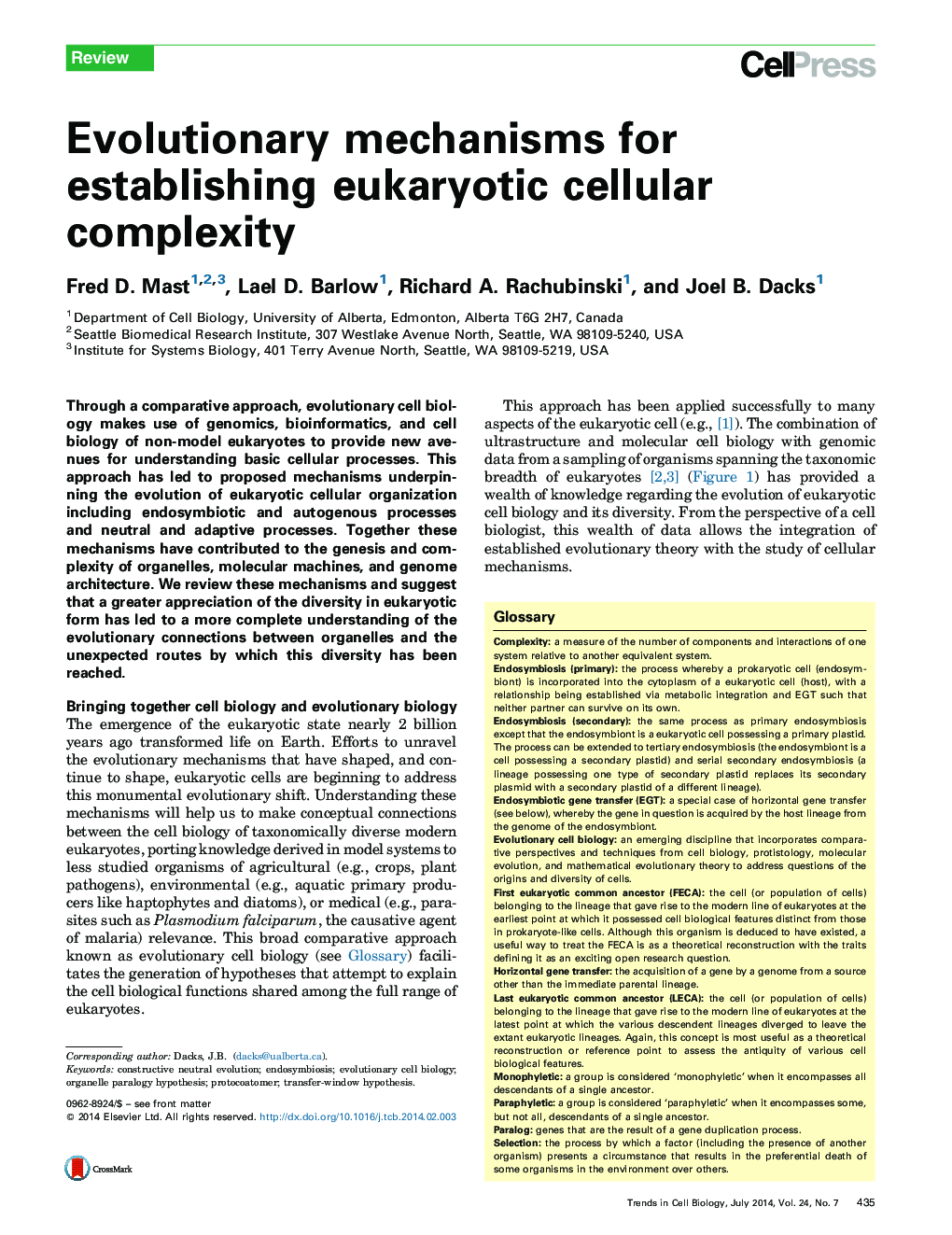| Article ID | Journal | Published Year | Pages | File Type |
|---|---|---|---|---|
| 2204583 | Trends in Cell Biology | 2014 | 8 Pages |
•Evolutionary cell biology merges genomics, protistology, and comparative cell biology.•Endosymbiosis is increasingly well understood at the mechanistic level.•The organelle paralogy hypothesis may explain autogenous organelle evolution.•Constructive neural evolution robustly explains complex molecular machines.
Through a comparative approach, evolutionary cell biology makes use of genomics, bioinformatics, and cell biology of non-model eukaryotes to provide new avenues for understanding basic cellular processes. This approach has led to proposed mechanisms underpinning the evolution of eukaryotic cellular organization including endosymbiotic and autogenous processes and neutral and adaptive processes. Together these mechanisms have contributed to the genesis and complexity of organelles, molecular machines, and genome architecture. We review these mechanisms and suggest that a greater appreciation of the diversity in eukaryotic form has led to a more complete understanding of the evolutionary connections between organelles and the unexpected routes by which this diversity has been reached.
